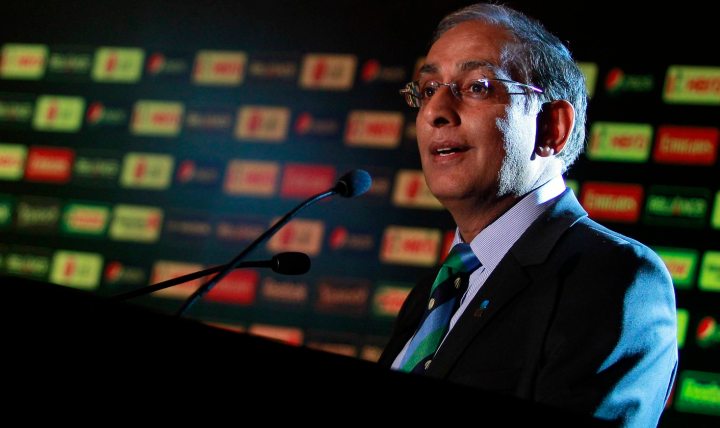Sport
Cricket: a closer look at broadcasting revenue

The BCCI and CSA are still undecided over the former’s scheduled tour to South Africa later this year. One of the primary factors at play is the revenue a touring India side brings to the country that hosts it. It’s becoming increasingly clear, then, that the revenue sharing for cricket needs another look. By ANTOINETTE MULLER.
The back and forth between Cricket South Africa and the Board of Control for Cricket in India continues to rage on, and uncertainty reigns over what will and won’t be this summer. Haroon Lorgat has met with a BCCI official, but nothing official has come of it. That will only happen once the BCCI gives the go-ahead at its AGM on 29 September.
It’s terribly frustrating, and yet the BCCI can get away with it. Simply because if all the complexities of the BCCI’s issues with Lorgat are stripped away and the BCCI’s powerplay is taken at face value, there is one clear theme which emerges: they’re a money spinner.
Whenever India tours anywhere, the host country makes a pretty penny from broadcasting rights. It’s a very lucrative business and as much as 80% of cricket’s income is generated through broadcasting.
Only select few countries really coin it, though. India, Australia and England are the three countries where broadcasting deals are the most lucrative, which is part of the reason the BCCI can bully other boards into doing things their way. England has massive broadcast deals in place. In 2004 alone, England cricket’s domestic broadcasting income was £47.4 million. This is a massive increase compared to the £33 million over four years. That sum increased massively when Sky signed a new deal with the ECB last year, totalling around £260 million over a four-year period. Radio broadcasting rights further lined their pockets. Australia will earn an estimated £322 million over the next five years from broadcasting rights after signing a new deal earlier this year.
India, England and Australia are the most marketable sides and their revenue from broadcasting is enormous. It’s easy to say you reap what you sow and that these countries with serious cricketing followers deserve to earn as much as they like. However, cricket is a global game, and the ICC’s responsibility is to ensure that the game continues to grow and that there is some sort of equality for the smaller nations to benefit from. That kind of money will not only benefit the first-class structures, but could throttle some of the talent drain as a result of T20 leagues around the world.
There is a simple solution: pooling together a percentage of revenue generated from broadcasting and distributing that between all full members with a small percentage going to associates, too.
To suggest a model similar to the English Premier League would be obtuse, as international cricket is, after all, not a domestic competition.
However, some basics of that model have got legs. It works as follows: domestic broadcast revenue is divided on a 50:25:25 basis; 50% is divided equally between the clubs; 25% is awarded on a merit basis determined by a club’s final league position and the final 25% is distributed as a facilities fee for the number of matches shown on television involving the club.
Currently, the only time broadcasting revenue is shared is during an ICC event, the 10 full members split 75% of that revenue from broadcasting – a lucrative stream for anyone involved.
Pooling broadcast revenue is a tricky tapestry because there are so many factors to consider. It is, however, not beyond comprehension. What exact percentage should be pooled together is debatable as the revenues differ so greatly across the board. Unless, of course, all money is pooled and the percentage a team takes is based on its current ranking and, perhaps, where it finishes when the newly introduced Test Championship eventually comes around.
To ensure that is successful, the calendar needs to be reassessed and shuffled. It is simply not viable or fair in its current state with India, Australia and England being the clique. By the end of October 2015, those teams would have played each other 47 times in a five-year period. England and Australia would have played 15 Tests between each other from June 2013 at the end of the 2015 Ashes. Let’s not even get into the one-day internationals.
There is no context in this skewed format and the answer isn’t quite as simple as pooling revenue and it shouldn’t be a surprise that this proposal has been shot down previously.
During 2008 employees of Boston Consulting Group (BCG) worked out of Cricket Australia’s offices to come up with a proposal where monies would be pooled. That proposal was met with resistance from England and India.
Since that was a no-go, it’s where the concept of a Test Championship was first seriously considered, with Martin Crowe being one of the instigators. His draft suggestion for its format never materialised, but it had some salient points. There will now be a Test championship, but that is hardly a pinnacle global event.
What is currently happening with CSA and the BCCI is not much different to the way full members have reacted to smaller nations and associates for years. Two wrongs do not make a right, but it does highlight the need to look again at the way revenue is shared.
With cricket now a business, there is no reason to play a team that will not benefit you financially. Business brains are needed to think of a way to sell a product to an audience who has the luxury of watching what they want on the demand. However, it’s less about serving the fans and the players and more about boards serving themselves – and that is the greatest shame of all. DM
Photo: International Cricket Council (ICC) Chief Executive, Haroon Lorgat speaks during the ICC World Twenty 20 World Cup 2012 launch in Colombo September 21 ,2011. REUTERS/Dinuka Liyanawatte





















 Become an Insider
Become an Insider